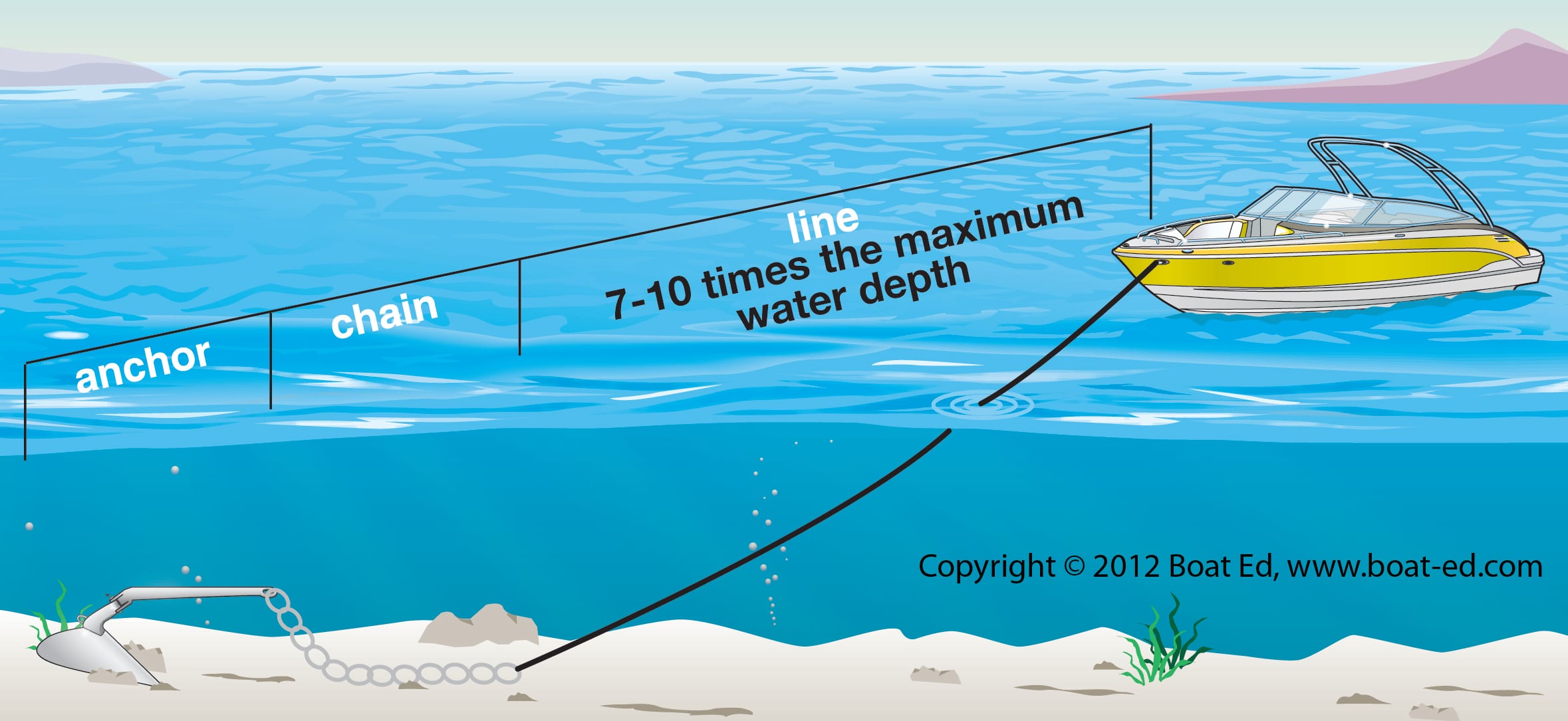Are You Anchoring Your Boat Safely?
Boat-ed 04.05.12

Most of the time people use anchors to park their boats so they can wet a line, go swimming or just relax and enjoy the scenery. However, anchors are also critical equipment in times of emergency. Anchoring may be a boating safety measure if your vessel becomes disabled so it pays to know how to do it right.
Prepare your boat anchor before setting out
 Before you hit the water, take the following steps to make sure your anchor is up to the job.
Before you hit the water, take the following steps to make sure your anchor is up to the job.
- Attach 7-8 feet of galvanized chain to the anchor. The chain aids in setting the anchor by lowering the angle of the pull as the chain sinks and lies on the bottom. Most anchors grip by digging into the bottom when the line is pulled horizontally. An upward pull may break the anchor loose. Using a chain also will prevent the sand and rocks at the bottom from scraping your anchor line.
- Be sure the anchor line is strong and long enough to anchor your boat. A good rule of thumb is that the length of the line should be at least seven to ten times the depth of the water where you plan to set your anchor.
- Since an anchor can be a safety device in an emergency situation, store the anchor and its lines where you can easily reach them. If the engine breaks down, you may need to anchor quickly to avoid drifting aground.
You should never obstruct traffic by anchoring in channels, near launching ramps or other busy areas.
Step-by-step instructors for how to safely anchor your boat
Whether you’re anchoring to enjoy a little down time on the water or you’re responding to an emergency, the following steps will allow you to safely park your boat.
- Select an area that provides plenty of room. Ideally, it should be a well-protected area with adequate water depth and a sandy or muddy bottom.
- Head slowly into the wind or current to a position upwind or upcurrent of where you actually want your boat to end up.
- When you are at that position, stop the boat and slowly lower the anchor over the bow to the bottom. Never anchor from the stern as this can cause the boat to swamp. The square stern may be hit by waves, and water will splash into the boat. The motor’s weight will add to this problem.
In the direction the wind is blowing:
- Slowly back the boat away downwind or downcurrent. Let out about seven to ten times as much anchor line as the depth of the water, depending on the wind strength and wave size. Tie off the line around a bow cleat, and pull on the anchor line to make sure the anchor is set.
- After anchoring, check out nearby buoys or features on the shore to help you know where your boat is positioned. Recheck these sightings frequently to make sure the anchor isn’t dragging.
- Periodically check connecting knots on your anchor line. When possible, use splices instead of knots. Knots weaken a line more than splices.
You can learn more about boating safety by taking an online boater safety course at boat-ed.com. The training offered at this site is approved by the state agencies responsible for boating safety education, and it’s the same material that’s taught in the classroom.
Studying at boat-ed.com is free. Those who must be certified before they can buy a boating license pay a one-time fee, which is due only if they pass the test. Students can take the test as many times as they need to pass it. Online boater safety courses are available in participating states, so visit www.boat-ed.com to take a course specific to your state.

